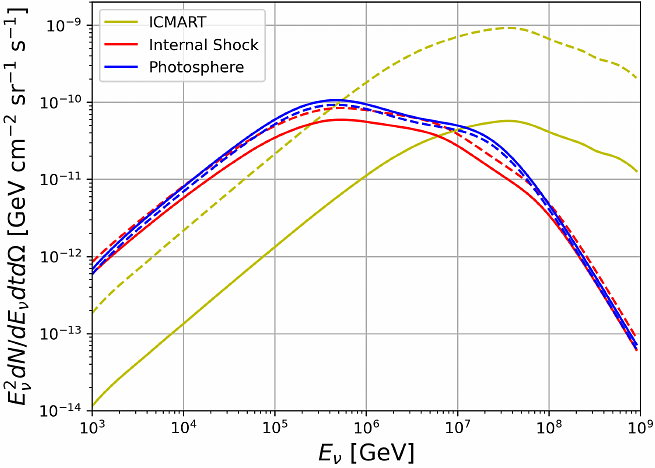Prospect of GRB-Neutrino Detection with Enhanced Neutrino Detectors

Prospect of GRB-Neutrino Detection with Enhanced Neutrino Detectors
Wenkang Lian, Shunke Ai, He Gao
AbstractGamma-ray bursts (GRBs) have long been proposed as a potential source of high-energy neutrinos. Although no confirmed association between GRBs and neutrinos has been established, meaningful constraints have been placed on GRB prompt emission models. The non-detection of neutrinos, reported by the IceCube collaboration, from both single and stacked GRB events suggests that the radiation zone is likely located at a considerable distance from the central engine, where the photon number density is relatively low. Here, we estimate future GRB-neutrino detection probabilities with more sensitive detectors than IceCube and explore the constraints on models if GRB neutrinos remain undetected despite improved sensitivity. Our findings reveal that if the effective area of a future neutrino detector can be enhanced by a factor of 10 compared to IceCube IC86-II, there is a high likelihood of detecting neutrinos from a GRB 221009A-like event, even in the context of the ICMART model, which exhibits the lowest efficiency in neutrino production. With such an advanced detector (enhanced by a factor of 10) and 5 to 10 years of data accumulation, neutrinos from stacked GRBs should be identifiable, or several popular models for GRB prompt emission (e.g., the dissipative photosphere model and internal shock model) could be effectively ruled out.